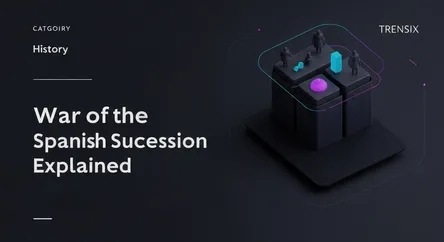History
War of the Spanish Succession Explained

A conflict that reshaped Europe, the War of the Spanish Succession was fought over control of Spain's vast empire after its king died without an heir.
What is it?
The War of the Spanish Succession (1701-1714) was a major European conflict triggered by the death of the last Habsburg king of Spain, Charles II, who died without an heir. In his will, he named Philip of Anjou, grandson of France's powerful King Louis XIV, as his successor. This created the prospect of a Franco-Spanish super-state, threatening the European balance of power. Fearing this, a "Grand Alliance" of nations, including England, the Dutch Republic, and the Holy Roman Empire, formed to support the rival claim of Archduke Charles of Austria.
Why is it trending?
This war is considered a pivotal moment in European history, sometimes described as the first world war of modern times due to its scale and theaters of operation in Europe and North America. It featured legendary military commanders like the Duke of Marlborough and Prince Eugene of Savoy. The conflict marked a turning point in international relations, culminating in the Treaty of Utrecht (1713). This treaty's principle—that the thrones of France and Spain must remain separate—was a cornerstone of European diplomacy for centuries.
How does it affect people?
The war's outcome profoundly redrew the map of Europe and the colonial world. Philip V became King of Spain but had to renounce any claim to the French throne. Great Britain was a major beneficiary, gaining strategic territories like Gibraltar and Menorca from Spain, as well as significant French colonies in North America such as Newfoundland and Nova Scotia. The war shifted the balance of power, curtailing French dominance and setting the stage for Britain's rise as a global colonial power. This reshaped trade, empires, and the political landscape for generations to come.